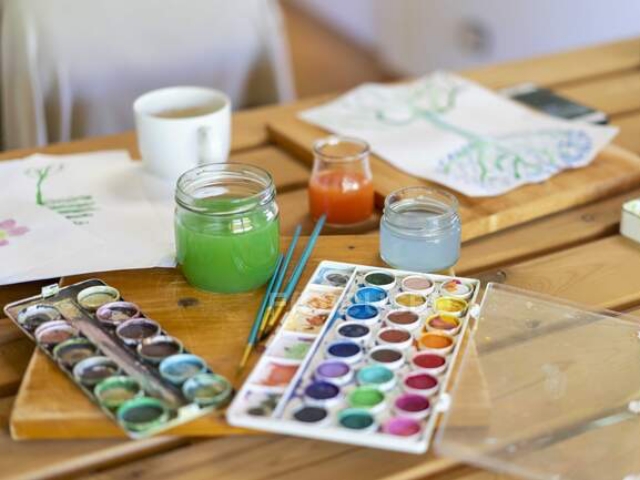Watercolor painting is a beautiful and expressive art form that may seem daunting to beginners, especially those accustomed to working with opaque mediums like oil or acrylic.

However, with the right guidance and practice, anyone can master watercolor techniques and create stunning artwork. In this article, I’ll explore some essential watercolor tips for beginners to set you on the path to success.
1- Use Quality Paints
Invest in high-quality watercolor paints from reputable brands. When we start painting most of us prefer to start practicing with cheap paints and then buy good paints once we think we have improved. While cheaper alternatives may seem tempting initially, using lower-quality materials can lead to frustrating results. It will slow down your process of learning.

Higher-quality paints offer better pigmentation, smoother application, and overall superior outcomes. Give yourself the best chance of success by starting with good paint.
2- Choose the Right Paper
The choice of paper is crucial in watercolor painting. Look for water-absorbent, heavyweight papers capable of handling multiple washes of color without buckling or deteriorating. Paperweight is measured in pounds (lb) or grams per square meter (gsm), and it’s recommended to use paper with a weight of at least 140 lb (300 gsm) for watercolor work.

In watercolor painting paper and watercolors are your true most crucial tools. So, make sure to choose these two things wisely.
3- Start with Light Layers of Paint
Begin your watercolor journey by applying light layers of paint. Mix sufficient water into your paint and gradually build up layers as needed to achieve the desired color intensity. Since watercolor lacks white pigment, it’s crucial to be patient and add layers slowly, preventing irreversible mistakes. Putting so much color at once will destroy your painting and give you drastic results.

It is important to maintain a slow rhythm in the painting. If you still can’t understand the precise details and steps involved in the process then you can take online watercolor painting classes. It will help you understand the details more precisely and master this form of art.
4- Create a Detailed Sketch Beforehand
Prepare a detailed sketch of your subject before diving into painting. This step helps you plan the lights and darks, ensuring a well-structured composition.

For beginners, a comprehensive sketch serves as a roadmap, reducing the complexity of figuring out highlights and shadows directly on the canvas.
5- Bleed Colors into Each Other
Embrace the beauty of watercolors by allowing colors to bleed and blend into one another. This technique, often referred to as the “blooming” technique, creates soft transitions and captivating visual effects.

Apply one color to the paper, then while it’s still wet, introduce another color with a similar water-to-paint ratio. Manipulate the wet paint to blend the colors organically. But make sure to do it slowly, over-putting the colors will distort your painting. You have to be very precise while using this technique.
6- Lift Color
One of the most valuable watercolor tips for beginners is learning to lift color. This technique comes in handy when you make a mistake or want to create lighter areas in your painting.

Keep a piece of paper towel nearby while you paint. While the paint is still wet, gently dab the area you wish to lighten or erase, and the paint should be absorbed by the paper towel. This allows you to correct mistakes or add highlights with ease.
7- Practice, Practice, Practice
This is the only thing that will make your painting skills better. Keep on trying new techniques, experiment with colors, and gradually you will become an expert at it.

Remember, you don’t have to just create a beautiful masterpiece but enjoy the process. Painting is a beautiful form of art and when you do it with your heart and give your full potential, you will create something extraordinary.
Final Verdict
Watercolor painting is a creative and enjoyable process. By using quality materials, choosing the right paper, starting with light layers, creating detailed sketches, and exploring various techniques like bleeding colors and lifting, beginners can enhance their watercolor skills and produce impressive artwork. Remember that practice and patience are essential for improvement, so keep experimenting and honing your craft to achieve mastery of this beautiful art form. Happy painting!
